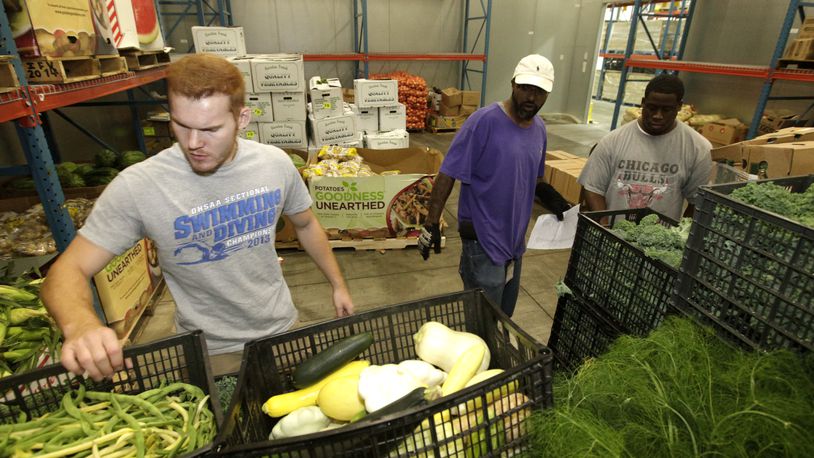“We want to bring more fresh produce, more fresh food to those who can’t afford to go to their closest grocery store which may be miles and miles away,” Lora Davenport, community relations manager for the Foodbank, said.
Ohio ranks third in the United States for households forced to eat less because they can't afford food, according to a U.S. Department of Agriculture study released in September.
Dayton ranked fourth in 2012 for food hardship, according to the Food Research and Action Center, a national organization working to eradicate hunger and undernutrition in the U. S.
The Foodbank, which distributed more than 9 million pounds of food to 99 local agencies that serve the hungry in fiscal year 2015, has spent the last six months constructing an urban garden on the lot adjacent to its facility.
“The Foodbank started this idea of having a community garden a few years ago, and it started when we built our new building and we have this extra lot,” Davenport said. The agency wanted to do something with the lot that could serve its neighbors.
The agency moved into a new 31,000-square-foot building about two years ago.
Staff and volunteers have already constructed 44 garden beds and hope to construct a few more. The urban garden will provide about 2,000 square feet of growing area. The garden should provide at least 2,000 pounds of fresh produce each season, Alex Klug, Foodbank horticulturist manager, said.
“We’re surveying clients to assess what they would like to have so we can plant whatever they want,” Klug said.
The Foodbank also plans to create a wildflower and pollinator garden to improve the crop and environmental health, Davenport said.
The garden is primarily funded through grants from the USDA and Montgomery County Solid Waste District. Local groups and businesses have also contributed to the garden, including providing volunteers to help with the construction of the garden.
“Mound Street Academies has actually been germinating seeds for us and that’s been in their own school and they’re going to be planting them soon,” Davenport said of the Dayton-based charter school.
The Foodbank plans to use the garden as an educational tool for people of all ages.
“It was really important that it included all different community members so it follows ADA (Americans with Disabilities Act) standards. We have heights at varying levels so children and adults can be here as well,” Klug explained. “…if we’re really trying to alleviate hunger, showing people, not just giving them the food, but showing them how to do it is very important,” Klug said.
Staff and volunteers have already planted peas and beets, but are holding off on planting for the next few weeks until temperatures stabilize.
About the Author
